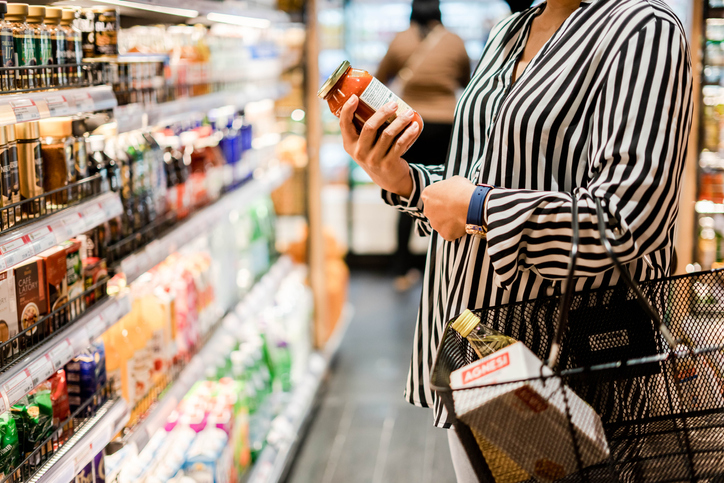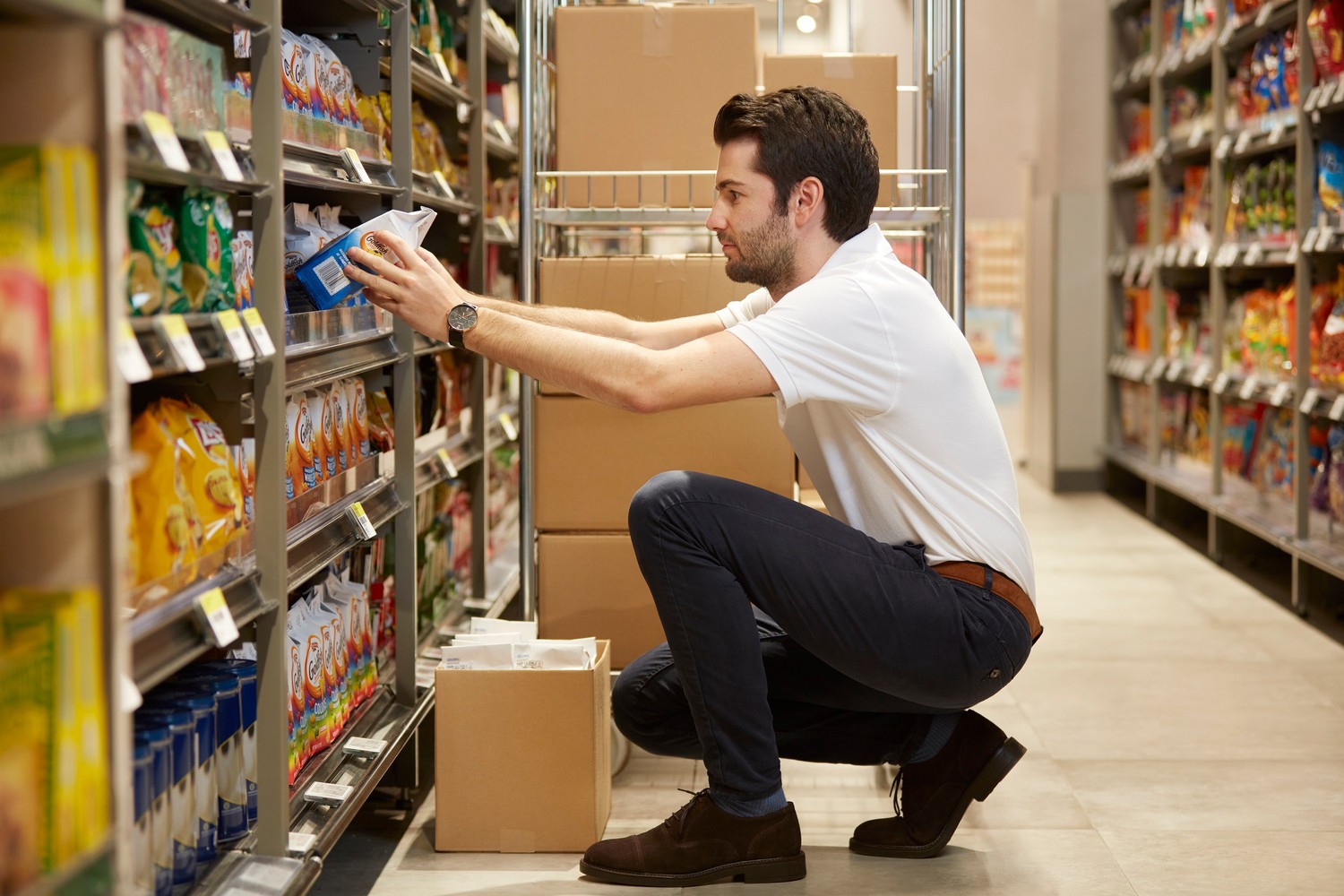
This article originally appeared on the blog site of Planorama, a Trax company, and is written by Paul Fitzgerald, a highly experienced senior executive with over two decades working in the Consumer Goods sector; and a history of revitalizing established businesses and establishing new ones.
Poor retail execution is a major reason consumer packaged goods (CPG) brands are struggling. New technologies such as Image Recognition can help them meet this challenge, with a flow-on effect for revenues and profitability, yet many CPG companies still default to manual checking. For anyone who develops, executes or advises on sales strategy, keeping up with the latest ways to ensure constant shelf visibility is a must.
It’s been tough for many CPG (FMCG) companies in recent years, with sales flat-lining or falling and margins decreasing. USDA ERS figures show that in 2016, US grocery prices dropped by 1.3%.
With the industry stagnating, CPG players cannot rely on organic sector growth to lift their results. Traditional approaches such as aggressive product development and priced-based promotions are common, but after more than 20 years working in CPG sales at a senior level, I believe they rarely lead to sustainable improvements as they don’t address fundamental shifts in consumer and retailer behavior.
A better way to unlock more growth is to improve customer engagement at the shelf. However, this means tackling systemic retail execution problems.
The war for shelf space (or why in-store visibility matters)
The fight for shopper dollars begins and ends on the shelf in every channel — from traditional trade to modern trade, from vending companies to drugstores. In recent years, the war has become fiercer, thanks to changes in shopper and retailer behavior that are here to stay.
For one thing, brand loyalty is translating less into sales. Consumers used to be unerringly faithful to their favorite CPG brands and buy them every time — not anymore. There’s still CPG brand strength, but now there are so many products to choose from, and categories are so fragmented, it’s much harder to convert brand loyalty into a purchasing decision. Consumers still buy their favorites, but not as often.
There’s so much choice, consumers are sometimes overwhelmed. Studies show that supermarkets typically display from 20,000 to 50,000 SKUs, and hypermarkets can have 100,000.Yet most shoppers only have a repertoire of 500 SKUs so their brains default to what behavioral psychologists call System 1 thinking — the intuitive, habitual and instantaneous processing shoppers do at point of purchase. This kind of thinking is done on autopilot, influenced by years of brand awareness and regular shopping habits. For 85 per cent of the time in-store, we deselect any product outside our normal purchasing pattern. If we can’t find what we want quickly, we give up — not just on that product, but on the whole category.
Another impact of increased choice is that shelf space has never been tighter, with multiple small and medium-sized CPG players competing with the majors in every category.
CPG shelf space is also at the mercy of store-branded products. These have become a major strategic play for retailers faced with falling profits, and their sales are increasing at the expense of manufacturer branded products. Around 18% of all North American supermarket dollar sales are now private label and in parts of Europe, it’s more than 40%. With an average 8-10% premium on margins compared to branded products, retailers have plenty of incentive to pursue aggressive shelf strategies for their own products.
Finally, there’s the impact of small store growth. Sky-high rents, a lack of large-footprint sites and shoppers’ quest for convenience are behind a trend towards small-format stores in high-traffic urban and suburban locations. They offer retailers lower overheads, larger product mark-ups and higher penetration rates. They also have smaller inventories and fewer shelves, so CPGs must fight for shelf space.
All this means retailers of all sizes are often competing directly with CPGs. Like their suppliers, they are suffering as online stores and fickle customers threaten revenues. With more products to choose from and less shelf space available, store owners are in a good position to get tough about optimizing every shelf for maximum profitability. Under-performing brands are quickly delisted to make way for proven high-sellers or own-brands. New products are particularly vulnerable – according to data from Nielsen, more than 85% of newly-launched CPG products are off the shelf within two years.
What can CPG companies do?

Clearly, success at the shelf makes all the difference between owning a high-selling brand with growing market share or a delisted product. Even the best sales strategy won’t work if it isn’t executed well in-store. This is a major challenge, with strategic and operational implications for what CPG sales reps and their managers need to do to determine a) how to put in-store visibility to work and b) how to increase in-store visibility to drive growth.
Optimize the sales force. Only the best reps will do. They need to understand the strategy, be incentivized to consistently execute it correctly, and have tools that make it easy to create the Perfect Store every time.
Access quality information. Trade compliance, promotion compliance, accurate competitor intelligence, optimum shelf conditions and correct pricing are just some factors impacting sales conversion at shelf level. CPG sales teams need visibility across every driver so they know what works and what doesn’t and can advise their customers accordingly, with up-to-date real-time shelf data that supports fact-based decision-making. They also need in-store competitor data so they can compare and respond.
Achieve more Perfect Stores. With so much at stake, every sale is valuable. I always told my sales teams that moving from a poorly-executed store to a Perfect Store was worth a 20 per cent uplift in sales. So non-compliant KPIs must be fixed, from out-of-stock rates and shelf share to pricing and promotion strategies.
Remove non-compliance risk. When only perfection will do, the importance of store compliance audits has escalated to new levels. But manual checking isn’t good enough. It’s too vulnerable to human error and manipulation. Sales managers can improve compliance by going on route with reps or conducting random checks, but it’s an inefficient use of their time. CPG tools such as sales force automation is a more efficient way for manufacturers to address the risk.
Partner with store managers and owners. Like CPG companies, they are under pressure to perform better and want to make it easy for customers to find, engage with, and purchase products. By working closely with them, CPG sales reps can build mutually beneficial relationships.
Be aware and responsive. It’s a jungle out there. Every week, new products emerge, competitor campaigns launch and consumer sentiment shifts. Staying competitive means knowing what’s happening in the marketplace and being ready to react immediately to challenges. Whether their cycle is weekly, fortnightly or monthly, every store must be monitored in between calls. It’s easy for products and points of sale to be moved by customers, store managers or the competition’s sales rep. That’s why in-store visibility matters so much. Having an ‘always on’ sales culture, where every member of the field team is vigilant in the marketplace and reports discrepancies, increases the chance of maximizing sales. New tools for shelf data collection and monitoring such as those based on Image Recognition (IR) can help to drive this change.
The power of new technologies
To win the retail execution war, CPG companies need to improve four growth drivers: shelf visibility, in-store effectiveness, customer relationships and field sales force productivity.
Realistically, that’s not possible with manual systems because human beings are flawed. Even the best sales reps can make mistakes and some reps try to game the system to reach their KPIs. For example, research shows that manually-collected data can be 15 to 40 percentage points less accurate than when CPG sales operations use digital in-store data collection.
The only way to obtain truly accurate, up-to-date and actionable information is by leveraging IR to expand sales force automation into retail execution. Technology has a crucial role to play in optimizing every aspect of a field team’s sales cycle, particularly new technologies such as real-time analytics, cloud computing and SaaS (software as a service).
The latest retail execution solutions are built around cloud-based apps that combine real-time Image Recognition (IR) with photos of shelves taken and uploaded by the sales rep in-store. Thanks to artificial intelligence (AI), images are analyzed instantly, allowing sales reps to benefit from immediate shelf insights to act upon. The more information these systems receive, the more their recognition capacity improves and the better they perform.
They process massive amounts of information to drive some of the most accurate shelf data monitoring results in the market, analyzing the images and comparing shelf data against target KPIs to produce detailed reports that are delivered back to the field rep within minutes. The reports help them to monitor planogram and promotional plans compliance, highlighting gaps in key areas such as shelf layout, brand blocking, flavor ranges, pricing, POS positioning, out-of-stocks and placement relative to competitors — anything that stops the outlet from being a Perfect Store. The sales rep can then consult with the store owner or manager about remedying the gaps directly in-store. These new solutions are game-changing, which is why some of the world’s biggest brands are investing in them.
Top 10 benefits of IR-based retail execution
The perfect future
Technology is unlikely to fully replace the field sales force. Even the most advanced AI systems can’t build relationships — you need humans for that. But there’s an important support role for technology when it comes to improving retail execution performance against proven drivers of sales growth.
Not everyone agrees — yet. A recent global survey published by CGT showed that 58% of CPG companies with annual revenues of less than $500M still use Excel to analyze field data. However, more than one quarter of decision-makers for CPG companies are considering using AI to support their retail execution goals. So perhaps we’re not too far away from a world of retail execution perfection.
Give us some info so the right person can get back to you.